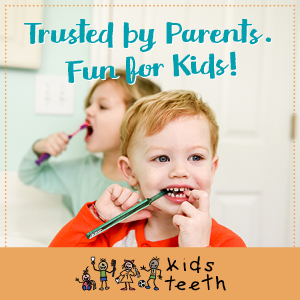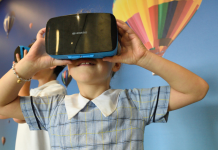One thing we all have in common as parents are questions. Lots of questions. Whether it’s concerning how to save for your child’s college fund, best practices for dental care, or how to talk to your child about a death in the family, it can feel overwhelming at times. While Google is handy, it can also be confusing and most importantly, unreliable.
We are so excited to introduce a new feature on Charleston Moms Blog called Ask the Experts where a team of local experts will answer your burning parenting questions in a monthly blog post. Our hope is that you get answers to some common questions that many parents have and connect with these amazing resources right here in our community!
Want to learn more about our team of local experts? Have a question? Ask it here and it will be answered in next month’s post!
*This is a sponsored post, presented by our valued local partners. While we love sharing these resources with our readers, we have not personally vetted each individual business represented here and encourage our readers to do their own research to find the best fit for their family.

Q: Should every kid be taking a multi-vitamin every day? What are your thoughts on Elderberry? Does it really work?
A: Thanks so much for your question! Healthy children receiving a normal, well-balanced diet do not need vitamin supplementation. Megadoses of vitamins can cause problems, specifically vitamins A, C, and D. Multivitamins, if you choose to take them, are in addition to a healthy diet, not a replacement. Your pediatrician may recommend a daily supplement if your child has a poor appetite or a restrictive diet. Of course, there’s no replacement for a daily intake of fresh foods. In general, exclusively breastfed babies should still get vitamin D supplementation.
Elderberry, the dark purple berry from the elder tree, is thought to have immune-boosting properties. There isn’t enough research about whether elderberry works in children or the proper dose for children.
Q: How hot is too hot to take young kids outside? I worry about heatstroke living down here and have heard lots of different answers to this question.
A: Thanks so much for your question! Children are more susceptible to heat illness than adults due to their size and inability to seek cooler temperatures at younger ages. Extreme heat can lead to dehydration, heat exhaustion, heatstroke. There is no exact temperature as the child’s ability to tolerate the temperature depends on humidity, sun exposure, heat index, child’s age, hydration status, among other factors. Children should stay hydrated, dress lightly but with sun protection, and cool off regularly. Concerning signs of heat illness that should prompt calling 9-1-1 include confusion, rapid breathing, lack of sweating, loss of consciousness.
 Expert(s):
Expert(s):
Dr. Mack
Pediatric Physician
MUSC
Q: I was diagnosed with postpartum depression after having my 2nd child. After a year I’m feeling better. I’m fairly certain I had it with my first kid too but did not receive an official diagnosis. If I have another child, will I experience it again?
A: Since you have already experienced postpartum depression, you have a higher risk of developing postpartum depression again. Risk factors include personal or family history of depression and anxiety, difficult pregnancy/delivery, unwanted or unplanned pregnancy, major life stressors, lack of social support from family/partner, multiple children under the age of 5, and health issues with mom and/or baby. I am so happy to hear that you are feeling better! Even though you may have a higher risk, treatment for postpartum depression and anxiety is HIGHLY EFFECTIVE. Some women choose to treat with medication, natural remedies, diet and exercise, support groups, religious practices, or counseling. Many women find that a combination of these treatments is most effective. Find what works best for you and your family. Please reach out for support. Talk with your friends, family, and health care providers to find the right treatment. It is not your fault, you are not alone, and help is available!
 Expert(s):
Expert(s):
Amy Jackson
Licensed Professional Counselor
Sweetgrass Counseling
Q: What kind of protective gear do I need to purchase to protect my son’s braces and teeth while he plays sports?
A: A loose-fitting, over-the-counter mouthguard is a great option to protect the braces during sports activities. These are typically made of medical-grade silicone that essentially provides a barrier between the braces and the lips… or perhaps a teammates’ elbow! Because of the loose-fit, your orthodontic tooth movement won’t be slowed or restricted. There are several great mouthguard choices out there- two of my favorites are Shock Doctor and Under Armour.
 Expert(s):
Expert(s):
Dr. Katie Bullwinkel
Board Certified Orthodontist
Bullwinkle Orthodontics
Q: How much should we be putting away each year to save for our kid’s higher education?
A: A general tool we use with our clients is the rule of 2,000. You multiply your child’s age by $2,000 and that is how much you should be saving every year. For example, if you start when your child is 2, you should be saving $4,000 a year through age 18. Keep in mind this rule is only expected to cover half of the cost of a four-year, in-state public university. However, there are several options when it comes to saving for higher education depending on your situation. It is important to consider that some funding options are restrictive to only qualified educational expenses. Others offer more flexibility in the type of higher education you wish to pursue. Your current tax bracket is also a consideration; it’s not only about how much you are putting away but where. With our clients, we’ve found that using more than one method for saving will maximize net returns. Contact us for a personalized college savings plan for your future scholar.
 Expert(s):
Expert(s):
Caroline Mahoney, Financial Services Professional
Steven Fazio, Financial Services Professional
Riley Knudsen, Financial Services Professional
New York Life, Charleston
Q: What are the recommended methods for teaching 4-year-old children how to start reading? Are there online resources that feature best practices?
A: As kindergarten teachers, our students come to us at various stages of reading readiness – and that is the way it should be! Children begin to read at different times, so please know that your child will read when he or she is developmentally ready. At age four, the goal is not for your child to read, the goal is for your child to be ready to read. That being said, there are many things a parent can do to help with their child’s reading readiness. These are simple practices that can easily be done as part of your daily routine.
Read to Your Child
The single most important thing you can do is read to your child, and it’s never too early to start. It is important for your child to hear your voice and its intonation.
Make Reading an Interactive Activity
It is important to interact with your child when you read with them. Talk about the story as you go. Ask your child, “How does this character feel right now?” “What do you think will happen next?”
Use the pictures. “Read” a book with your child just by looking at the pictures. Have your child tell you what he or she thinks is happening in the story by looking at the pictures – then read it. Make up stories together orally. Begin by stating the name of a character and let your child add to the
narrative by describing the character. Continue talking back and forth to add more details. Where does the character live? What does the character like to do? Young children can benefit from simply holding a book (even if it is upside down!) and turning the pages. Knowing how to handle a book is an important step on the way to reading.
Visit the Library
The library is so much more than a place to check out books! For pre-readers, take advantage of the free children’s programs (story time, puppet shows, art classes, etc.) the library offers. By participating in interesting activities, children will begin to associate the library with a fun place where you can learn. While you are there, choose a book for yourself. Modeling reading impacts your child’s desire to read.
Use Everyday Activities to Boost Reading Readiness
Activities that are not necessarily reading can be a tremendous boost to reading readiness. After outings with your child, ask them questions about what they did, how it made them feel, what they liked the most, etc. Thinking in this way helps their comprehension skills. Take advantage of environmental print. Environmental print is all the printed words that are around us every day – the cereal box, the fast-food sign, etc. Children recognize the words they see each day. Point out the print that is familiar to them. Talk about what sounds are in the word, then what letters are in
the word. When your child begins to recognize letters, you can “hunt” for them as you drive or walk
around town – make it a game.
Keep It Fun
Make sure reading time is fun. Make it a special time for you and your child (there’s a reason why so many families end the day with a book before bed!) Know that reading the same book over and over is OK (we understand this can become tedious for parents!). Often, children will pretend to read a book they know very well, turning the pages and telling the story. This gives them confidence in their developing skills.
Remember the Goal
Keep in mind that, at this young age, the goal is not to read. The goal is to get ready to read. As your
child builds his or her reading readiness skills, sounds will become letters, letters will become words, words will become sentences. Reading will happen on your child’s timetable. It’s your job to get your child ready to read by showing them that reading is fun and enjoyable.
Resources to explore with your child:
Abcmouse.com
Starfall.com
Bob Books book series
Sesame Street (you can access these on YouTube as well)
Daniel Tiger’s Neighborhood (pbskids.org/Daniel): stories, videos, games
 Expert(s):
Expert(s):
Kathleen Thomas, Learning Specialist
Caroline Thomas, Kindergarten Teacher,
Rett Fitts, Kindergarten Teacher
Mason Prep School
Q: When is it recommended to make my first dental appointment for my Baby? At her first sign of a tooth?
A: When it comes to your child’s first dental visit it’s best to remember “first birthday = first visit!” The American Academy of Pediatric Dentistry recommends children see a pediatric dentist by 12 months of age or within 6 months after the first tooth erupts. This typically falls around their first birthday. The idea of such early dental visits is still surprising to many new parents. However, national studies have shown that preschool-aged children are getting more cavities. Did you know that many children have dental decay by age one, and 50% of children have decay by age 3.
At Kids Teeth we offer complimentary 18 months and under exams. During these exams, the child will sit in a parent’s lap. This method provides additional comfort to the patient. During this appointment, we will discuss the best ways to prevent tooth decay and cavities as well as teach parents how to properly clean their child’s teeth (along with a few helpful tips). The most important part of the visit is getting to know and becoming comfortable with the pediatric dentist and his staff. Call us to schedule your child’s complimentary visit – 843.216.5879 (Park West) or 843.884.7041 (Johnnie Dodds).
 Expert(s):
Expert(s):
Dr. Mike & Dr. Will
Board Certified Pediatric Dentists
Kids Teeth













